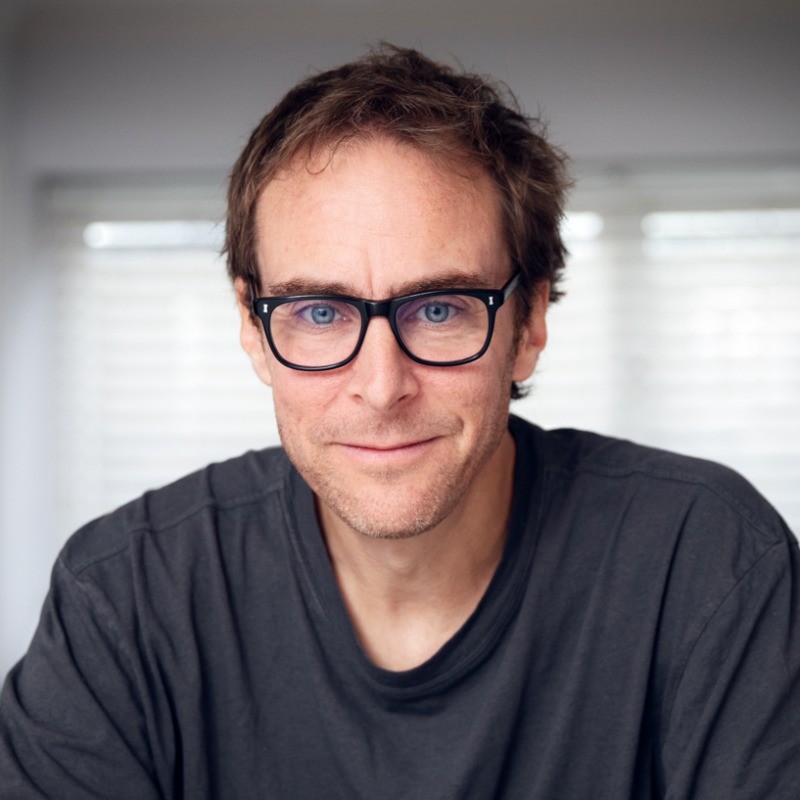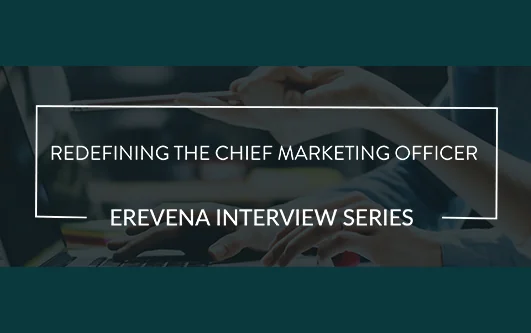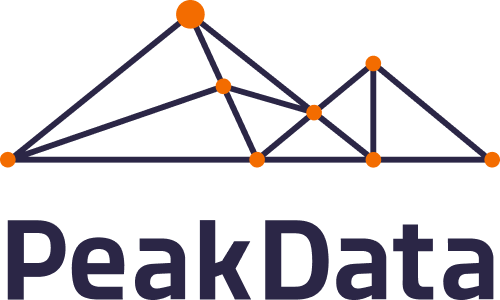Nick Lisher, Chief Marketing Officer at Flo Health, talks to Erevena’s Flo Bown about the power of marketing to build communities of fans, consumers, neighbours and more – and why a differentiated brand proposition is a crucial success factor.
Can you tell us about your early career?
My first job was as a product manager for MTV. Back in 2000, I didn’t know what I wanted to do post university, although I knew I was interested in music and the internet. That’s how I ended up at MTV, which is where I also became fascinated by consumer technology and what was happening in the market. After the first internet wave where it was all about what publishers could tell you, there was an exciting second wave coming along, which was about how consumers could connect with one another. I became hooked on this concept and on building community websites and applications.
What next after MTV?
In around 2005, I was in touch with the founders of a website called MySingleFriend.com . They’d built the website themselves but needed a bit of help in ‘getting it out there’! My first port of call was to walk around the MTV offices and persuade my colleagues to sign up! I kept talking to the MySingleFriend founders behind the scenes and eventually when they started monetising, I joined them full time as their strategy director – I think I was employee No. 6 at the time.
How did this morph into a marketing career?
I’d never really considered that marketing was something I did, rather I felt my skills were mostly digital. But I was also thinking about the customer journeys and how they interacted one another online. What would compel them to visit and interact with an app or a website? MySingleFriend was really interesting because the branding for a lot of the dating websites at the time was about what you were missing in your life. MySingleFriend had a very different brand proposition. We were about celebrating the single life and I felt like we were the first brand to do that in dating. We didn’t talk about love, but instead we talked about the thrill of being single and how much fun it was. Froma brand perspective, we wanted married people to be almost jealous of single people because they had MySingleFriend – and we achieved that.
How did this experience at MySingleFriend broaden your marketing knowledge?
I saw the value of having a really strong proposition with a brand that stands out from the competition. We were also lucky that we had a celebrity endorsement in TV personality Sarah Beeny who was part of the website from very early on. She promoted us a lot on TV and in interviews. Beyond that, it was important that our products and marketing matched up. The way that the product worked wasn’t sending a lonely-hearts message about liking animals but was about friends and friendship groups. If you were visiting a profile, you could see a group of other people connected to it. So, we took this idea into the marketing as well. When we did our Google or Facebook ads, or other nascent forms at the time, we wanted to make it feel that MySingleFriend was like going to a bar with your mates. That was a really important product and marketing journey for the brand.
What was your first ‘official’ marketing role?
After MySingleFriend I joined mydeco.com as the UK and US marketing director. It had been started by luminaries of the London internet scene Brent Hoberman and Martha Lane Fox who were behind lastminute.com. But it was less than successful. I worked with a lot of brilliant people there and I think we all probably knew – but didn’t say it loud enough – that there wasn’t a clear proposition for the customer. The company landing page talked about a ‘one-stop-shop’ and now whenever I hear that phrase it gets me on edge because that’s not what people wanted! Some brilliant companies splintered off from mydeco.com, such as made.com, but essentially it was a real learning journey for me.
How did you then get a taste for marketing on a global scale?
I joined a company called Massive Media for a couple of years before they sold to match.com. It was a lesson in internationalisation. Suddenly I went from marketing to UK and US customers to thinking about payment methods in Brazil, or how to do a go-to-market in Indonesia. These were things I’d never really thought of before. Then when that company was bought by match.com, we had to think about how we integrated with a bigger ecosystem of dating brands as well. That was really interesting.
Can you tell us where your interest in influencer marketing came from?
I worked for two years as VP Growth and then CMO of Depop. I was there quite early on when it was about 25 or 30 people. Depop didn’t have a growth function, so I played a part that was halfway between product and marketing, figuring out how to use influencer marketing and what retention tactics, CRM and growth hacking we needed to grow the number of listings, views and daily users. This was tremendously successful. We grew the daily active usage around five times and the amount of goods bought or sold on the platform (the GMV) by a similar amount while I was there. I really learned the influencer marketing game at Depop. The growth of the influencer and the growth of Depop were very closely entwined because Depop had a brand that really resonated with influencers.
It was really interesting watching, for example, an influencer with a particular style post about Depop. Then we’d see his or her followers come into the app and start trading items of that style. So, you were watching tribes on Instagram, on TikTok and on Snapchat coming across and being tribes on this buying and selling platform. It became very popular with teenagers whose style changes all the time as they try different things and decide who they are. With so many unworn clothes out there, Depop was an opportunity to recycle in a way that really made sense for teenagers, because they care deeply about their style and how they’re presented to the world. It was about identity as much as anything, but it was also deeply tied with the influencer world and the communities growing up around it.
How did you continue the theme of building communities in your next role?
Community and community building has been one of the constant threads throughout my career, whether that community has been around music (MTV), fashion (Depop), or dating (MySingleFriend). When I joined Nextdoor, it felt like an opportunity to use this experience for the good of the world. I had conversations with the founders before joining about sociology and different theories of how localism had been dying since the 1950s. We talked about how, in periods when localism had been prevalent, society had suffered fewer ills with less theft, better safety for children and more connectivity for older people in the community. I felt that growing Nextdoor was something that would be hard to do, but very worthwhile.
How did you achieve growth for Nextdoor?
With most social networks, you can grow through influencers, or fast internationalisation, or virality. However, none of this was built into the product at Nextdoor. Instead, it required a lot dirt-under-the-fingernails marketing, from building field teams to marketing in communities and figuring out creative ways to use direct mail that would pull people onto the platform. My role went from launching a company to buying a competitor, then suddenly launching in five more countries, building out a full stack team in Europe, and thinking about monetisation. The role kept morphing. And the pandemic lockdowns made a difference because that’s when a lot of people came to the product and our daily active usage in the UK doubled overnight. We ‘met the moment’ with things like a big partnership with Barclays to offer free services to all shuttered local businesses in the UK. It was a tremendous growth story and something of which I’m really proud.
You’ve since become CMO at Flo Health – what’s the back story here?
Having been lucky enough to work with two spectacular growth stories in Depop and Nextdoor, I’d then become personally interested in health technology. I’d reached an age when all those things I’d taken for granted in terms of my health weren’t there anymore, so I started looking at things like sleep tracking and glucose monitoring. Especially during Covid, it felt like this was the next wave of where technology could really help people. I was connected to Flo through a friend at C-level in the company and had begun consulting for them during 2021. I could see that the long-term retention of customers was outstanding, including paying customers, which usually means a company is doing something very, very right. So, I took on the role of CMO at the start of 2022.
How have you taken marketing forward at Flo Health?
I saw an opportunity to introduce marketing to what had been a very product-led company and to put the end user at its centre. There was already a marketing team, as well as a user acquisition team and a brand team, but it wasn’t a cohesive marketing function. So, we started by going back to our brand principles and defining what that brand was. We defined the brand purpose as to build a better future for female health by helping women harness the power of their body signals. Inherent in this ‘better future’ is the fact that the past and the present haven’t been good enough for women. Of course, it’s one thing saying that something’s not good enough and an entirely different matter to do something about it.
What does Flo do to make things ‘better’?
This is the bit that really interests me – harnessing the power of the body’s signals. We take three points of data (your cycle, your symptoms and your wearable data, such as that from heart rate tracking tech) to provide personalised health insights. That’s the core of the product – the ‘what’. But the emotional benefit is where the real value comes. One Flo subscriber told me that before using Flo, she felt her health had been working against her but now it was working in tandem with her. I’ve even had Paralympic athletes contacting me to tell me they use Flo in their training schedule. With 33% of all women’s health conditions being reproductive, you can see just how important reproductive health is, yet there’s a real issue getting research dollars invested in this area.
What about the social aspects of Flo’s product and marketing?
In defining our purpose, one of the things we’ve done is to roll out a social campaign aimed at making the product free for a billion women worldwide. We launched this in India, Indonesia, Pakistan and Bangladesh at the end of October 2023. The intention with this is both to fulfil our mission, and to prove that we can make a dent in the world’s health literacy.
We were also faced with the prospect that our business might be damaged in the US earlier in 2022 with the Supreme Court’s decision to overturn the 50-year-old Roe v. Wade decision concerning women’s fundamental right to privacy and freedom of choice and President’ Biden’s response to this. While he asserted a commitment to safeguarding patient privacy, he warned against using apps to share personal information. We took action in Flo’s own style by building our Anonymous Mode allowing subscribers to use the app anonymously. This means, for example, that if we are asked by a court of law for information about a particular user, we wouldn’t be able to if they’d used this mode. It was the first piece of functionality that we’d delivered with PR in mind and was the result of collaboration with both the chief product officer and chief technology officer.
How does it feel to have won awards for Flo’s Anonymous Mode?
We won a Fast Company Innovation by Design award in early 2023 and, more recently, were named one of Time magazine’s best inventions for 2023. We thought deeply about how people were going to use the Anonymous Mode, so it’s a really nice moment for the team to be listed alongside the likes of the Apple watch and ChatGPT as one of the best inventions. Yes, it’s about the technology, but it’s more about the step that we took for the user in saying that we would protect their data while enabling women to continue tracking their menstrual health digitally.
How has marketing supported Flo’s growth since you joined?
We’ve now grown our monthly active users (MAU) from around 40 million to just shy of 60 million and Flo has become the largest health app in the world by MAU and installs. We’ve also significantly grown the user acquisition spend since I joined based on being able to improve the technology behind user acquisition. We’ve learned that with 6 out of 10 US and UK women aged between 16 and 45 already using a period tracker, we had to be really creative in how we pulled people to the app with our messaging. So, we’ve worked really closely with our product people on how we sell the vision for Flo because what we hear from our customers is that it is just astounding in the way it can help them.
What advice would you give a founder looking to bring on board a marketing leader?
I’d encourage early-stage founders to have a think about what problems they’re trying to solve and ask what skills they’re missing in their team. Then, I’d go out and talk to people outside the company to find out what sort of people work in marketing, growth and product. And if you meet someone you really gel with, that’s the time to make a hire. Or you may find that you just need a few more mid-level team members who can execute at that stage in the business, rather than overstaffing a role, which can be a danger early on.
What’s the impact of new tech, such as AI?
I’m going to steal a line from our chief technology officer (and he might have stolen it from somewhere else!), which is that marketers need to see AI as their co-pilot. You can either view AI as something that’s going to take your job or accept that it’s here to say so you might as well learn to use it and see what’s possible with it. AI has actually been around for quite a long time, for example in Google Search, but the difference now is that fairly junior employees can use it to their advantage. My advice is that if you’re not using it, you’re missing out but don’t think it’s going to replace a bunch of stuff because it’s not quite there yet.
What are your career plans for the future?
I’ve never really had a career plan, except perhaps when I was 21 but that was a short-term ambition to work in music and the internet, which I did! I didn’t plan much else after that. And I don’t know what’s next, but I do know how lucky I’ve been to meet some really inspiring people who’ve built some really inspiring products and to help them grow and build their teams.
Share this article:












